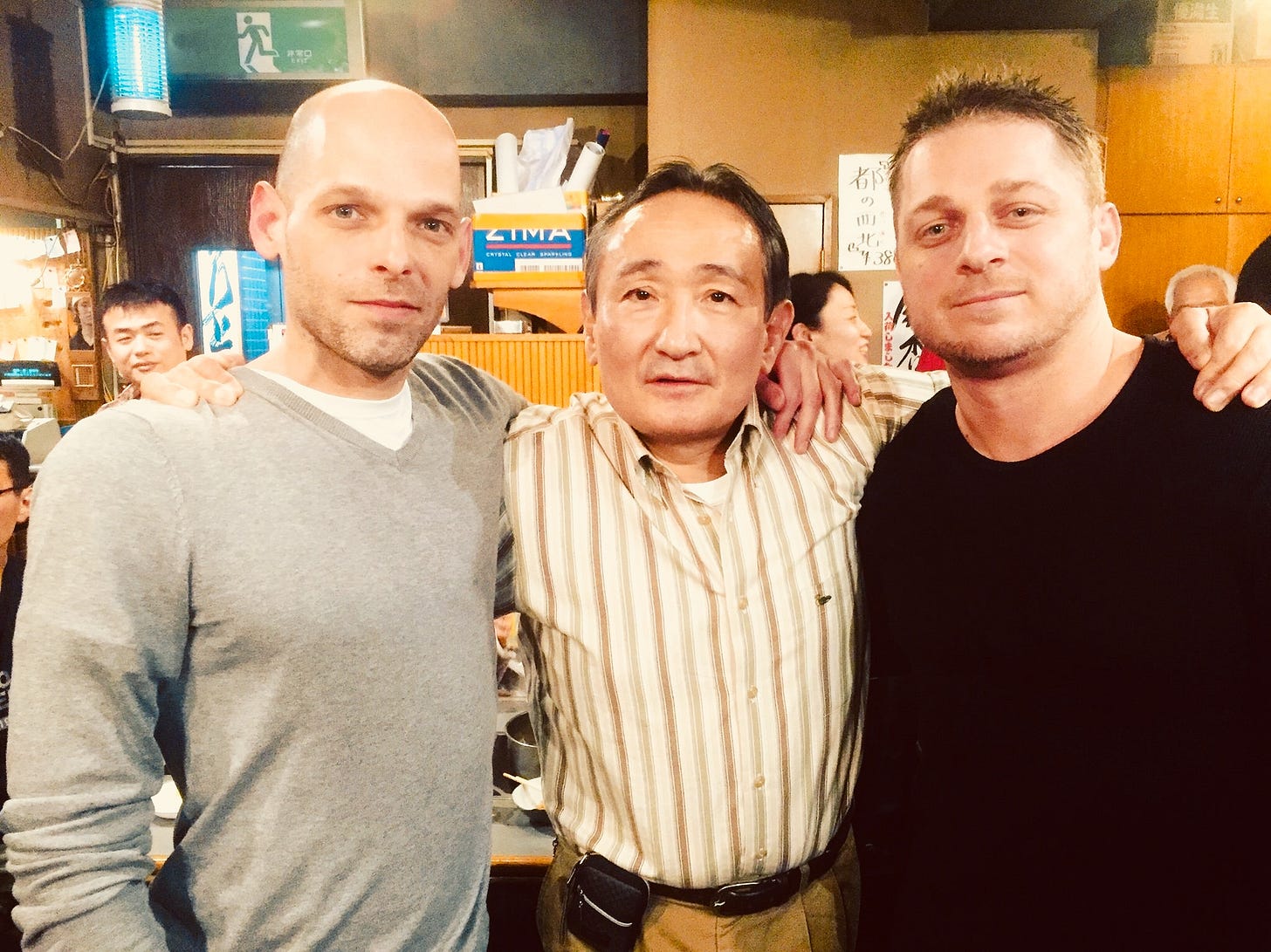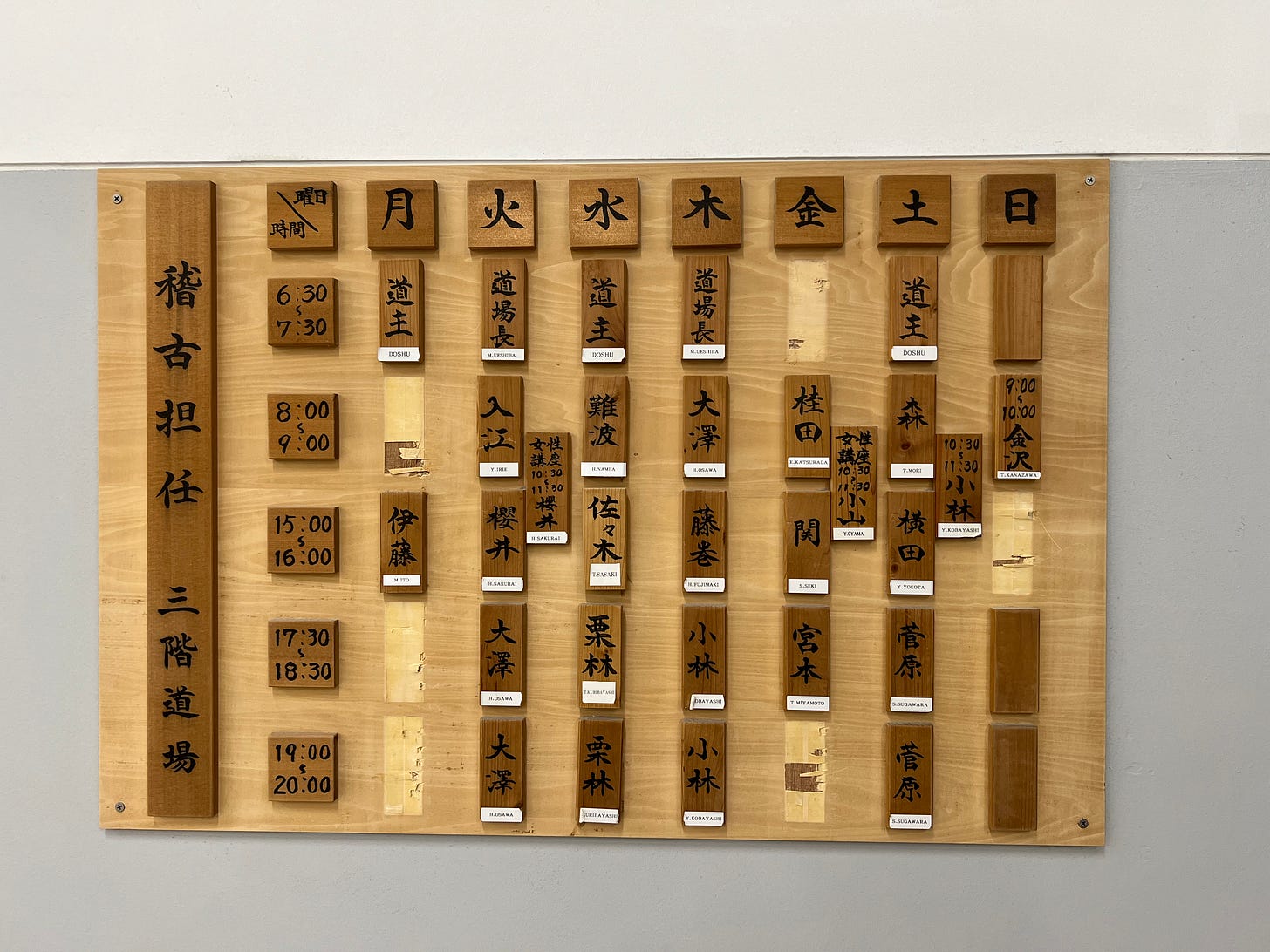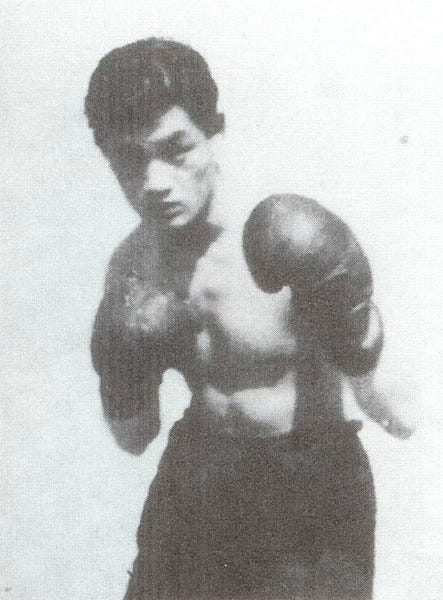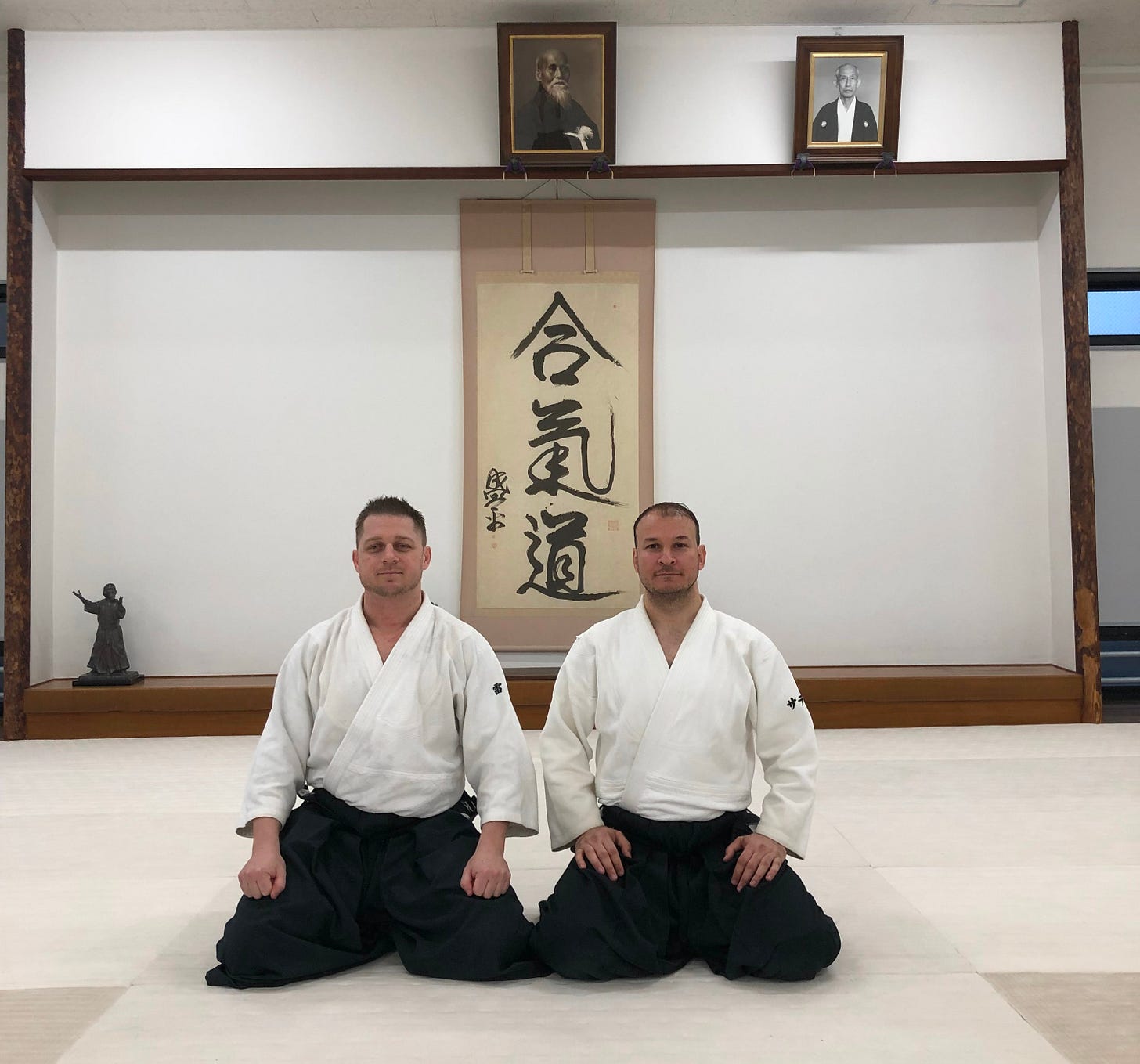Yoshiaki Yokota Sensei is the definition of a shihan and his retirement from his long-held Monday evening classes at the Aikikai Hombu Dojo truly marks the end of an era for modern day Aikido and for myself.
Yoshiaki Yokota Shihan, who I will refer to simply as “Yokota Sensei” from here on in, ran the Monday night 5:30 pm and 7:00 pm Hombu Dojo regular classes for 16 years, from April 2009 until March 31st, 2025.
Side note: Shihan means “master” but unfortunately now a title given out to any Tom, Dick, and Harry. Sensei’s title is well deserved however.
For 16 years, Yokota Sensei’s classes were integral to my martial arts training, offering a distinctive approach that set him apart from his predecessors: Yamaguchi, Endo, and Yasuno Shihans. Indeed, his classes were the only ones I ever attended at Hombu Dojo, including his 3pm Saturday class (that he took over from the wind blowing Watanabe Shihan) that was followed by his private “NHK” class at 4:30pm.
Yokota Sensei's martial journey began with judo and karate before he dedicated himself to Aikido. He was also influenced by a champion boxer turned Aikido instructor named Kuroiwa Sensei and this diverse background was evident in his teaching as he seamlessly integrated elements like side kicks and jujutsu armbars into his techniques as well as brilliant bokken and jo work. He really has it all and can teach the same martial principle from strikes, throws, and traditional weapons. Finding someone who can show you all three at once is very rare. But then again, Yokota sensei is a rare coin.
It is said that other instructors at Hombu also have backgrounds in other martial arts but Yokota Sensei is the only one who showed his other arts (karate, judo) inside his Aikido. Now that’s not to say that the other shihan haven’t had outside training, but none of them have been able to get away from the cookie-cutter style that Hombu now employs.
Yokota Sensei’s emphasis on martial application and his no nonsense straight in for the kill style was a refreshing departure from the more artistic interpretations of aikido that can be found these days in the Aikido world and this approach resonated deeply with a few practitioners seeking a martial art grounded in real-world effectiveness. He will go down in Hombu Dojo folklore as maybe the least popular shihan of his era (people often complained that his techniques were too difficult or too martial) but in my book, the greatest ever. That’s a big thing to write but i’ll argue it until the day I die.
My first encounter with Yokota Sensei was at the 2008 International Aikido Congress in Tanabe. At that time, I was contemplating stepping away from Aikido, feeling unfulfilled after years of training under various instructors. I had recently joined a kickboxing gym, having craved the punching and kicking that I had given up on after 13 years in karate as a kid. I remember going to that Tanabe congress thinking “well if I don’t find the answer here, I am done” and right on cue (after not being impressed by others the whole week) he blew my socks off on his first technique. I was hooked.
Witnessing Sensei's dynamic execution and martial intent rekindled my passion for the art. His ability to demonstrate the martial essence of aikido, incorporating precise strikes, joint locks, throws, and weapons, provided the depth I had been seeking.
I immediately started going to his classes at Hombu Dojo after 4 years at Tada Sensei’s Gessoji Dojo and random Hombu classes (I used to attend Tuesday Masuda Sensei and Saturday Sugawara Sensei a lot before I found Yokota Sensei). In 2008, that meant Thursdays at 3pm, where I would meet my future sempai DJ, who became the Yokota translation machine, explaining everything to me in a way that made sense. I will forever be indebted to DJ for those 9 years from 2008-2016 before he returned to the US.

It is there where I met Husein too, who became my sidekick and brother in arms and the best partner I’ve ever trained with at Hombu. His judo background and my wrestling background meant that our Monday night training from 2016-2020 was some of the highest level training I ever experienced. It became freestyle Aikido, more randori than traditional look and copy practice that Japan is famous for. More often than not we found ourselves countering each others counters and proudly took over the far top right hand corner of the dojo for a few years. One comment after class from Yokota sensei is something that Husein and I will forever be proud of when he called us “doubutsu doushi” 「動物同士」which translates to “you’re a pair of animals.”
In DJ, I found someone with such a high level of martial arts and someone that shared my appreciation for his distinctive style, and would never be able to have become “doubutsu doushi” without his guidance and regular Monday night butt kicking / private seminar.
Unlike some dojos and other Hombu classes where the culture felt restrictive and borderline cultish, Yokota Sensei fostered an environment that encouraged exploration and understanding of both aikido's martial and traditional roots. His teachings bridged the gap between traditional forms and practical application, making each session both enlightening and invigorating.

As we students bid farewell to Yokota Sensei's Monday night classes, we acknowledge the profound impact he has had on our Aikido journeys. His retirement signifies not just the conclusion of a chapter in my life but also the enduring legacy of a teacher who brought clarity, effectiveness, and martial integrity to the forefront of our practice. While sensei changed a lot over recent times, mellowing and slowly down quite a lot, perhaps due to injuries that he probably should have taken care already (some say he wasn’t allowed to), his presence on the mat will be missed on Mondays. He will continue to teach at 3pm on Saturdays although that class is attended by mostly older folk so I tend to shy away from going, which in effect means my days at Hombu Dojo are now over. It was a great journey and the principles and insights he imparted on me will continue to influence and inspire me for many years to come. Being known as a “Yokota guy” by the other Hombu dojo shihan is a badge of honour for me.
To read more about Yokota Sensei in depth, please read this article I wrote back in 2020.
Rionne McAvoy is the director of the award-winning documentary The One's Left Behind: The Plight of Single Mothers in Japan, showcasing his dedication to addressing pressing social issues. A committed documentary filmmaker and professional wrestler, he explores critical themes with passion and insight. Additionally, he has a keen interest in post-World War II Japan, particularly the intricate connections between politicians and gangsters during that era. Known in the wrestling ring as Rionne Fujiwara, he brings the same determination and storytelling prowess from his wrestling persona to his filmmaking endeavors.




![新潟県合気道連盟 - [横田愛明師範八段昇段記念 新年合同稽古会・昇段祝賀会] とき:平成30年1月28日(日)... 新潟県合気道連盟 - [横田愛明師範八段昇段記念 新年合同稽古会・昇段祝賀会] とき:平成30年1月28日(日)...](https://substackcdn.com/image/fetch/$s_!dPBu!,w_1456,c_limit,f_auto,q_auto:good,fl_progressive:steep/https%3A%2F%2Fsubstack-post-media.s3.amazonaws.com%2Fpublic%2Fimages%2Ff4c38d4e-5f67-4686-9d35-fdcd3adecbe1_1920x1280.jpeg)




